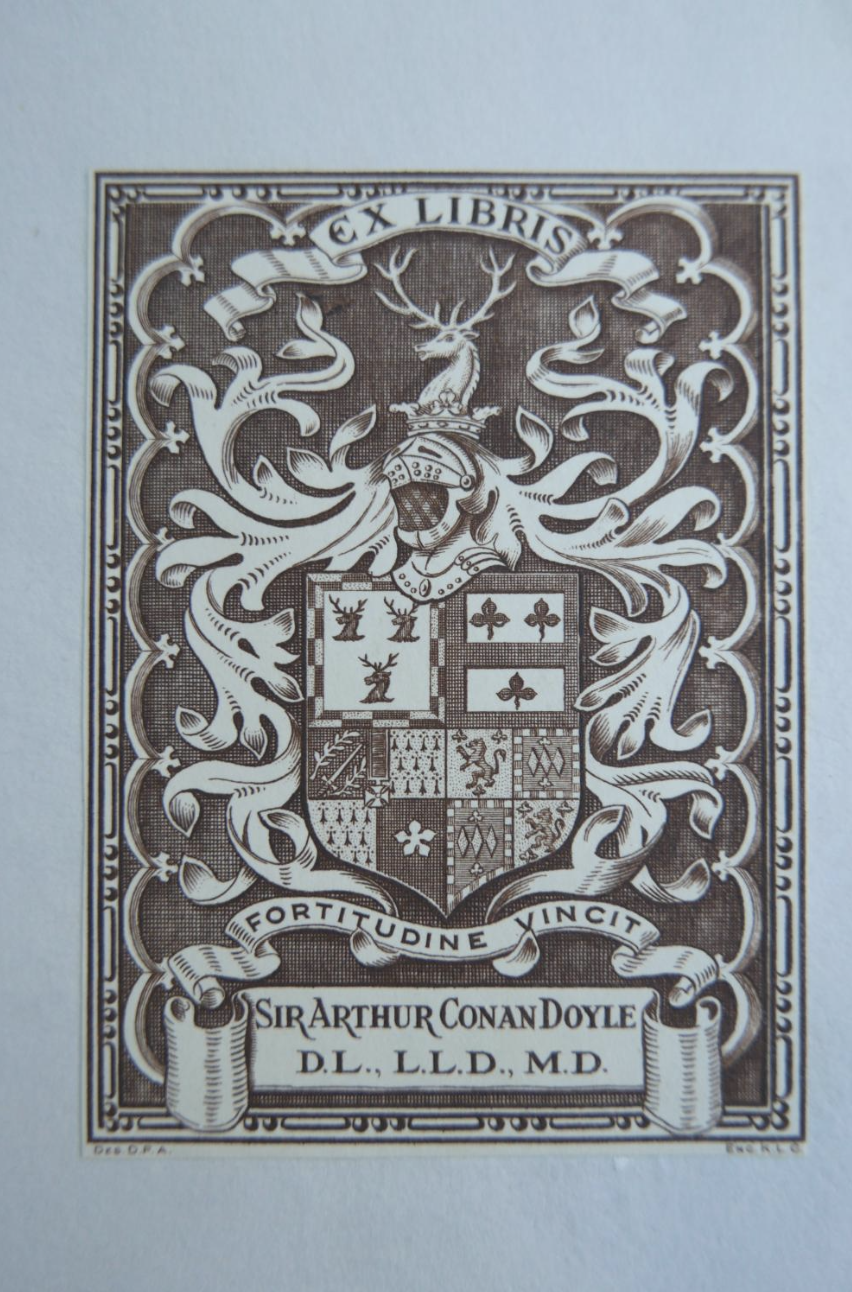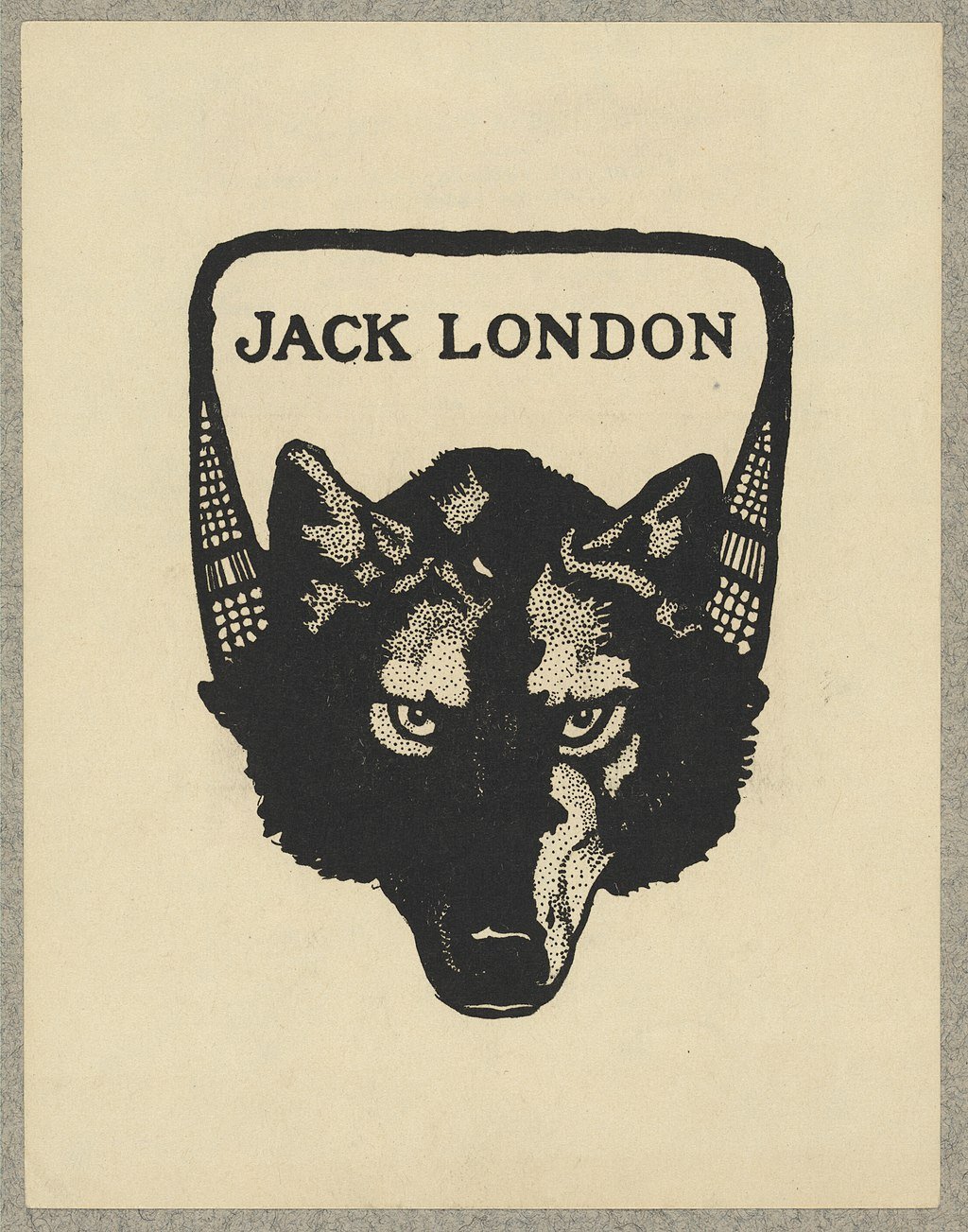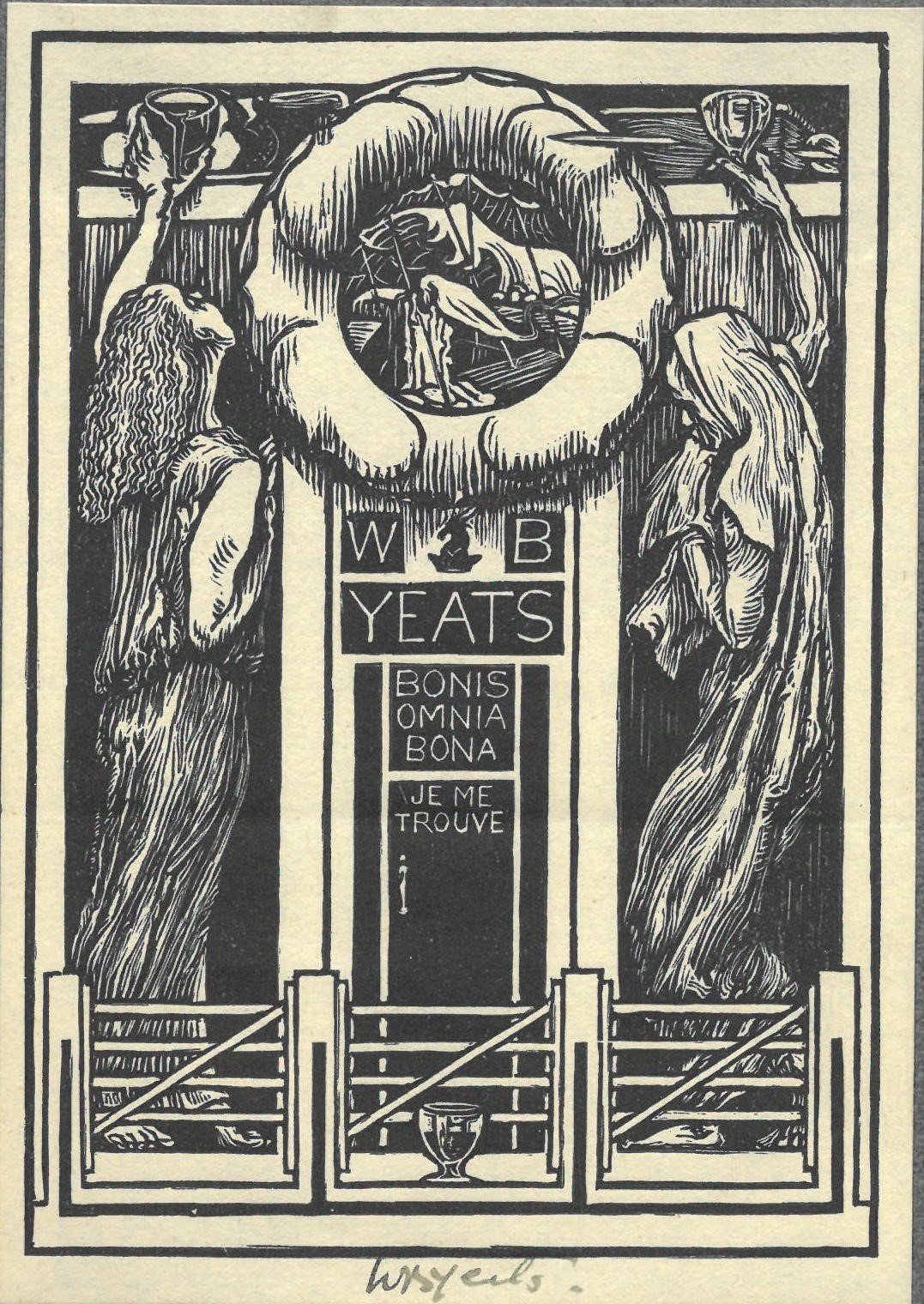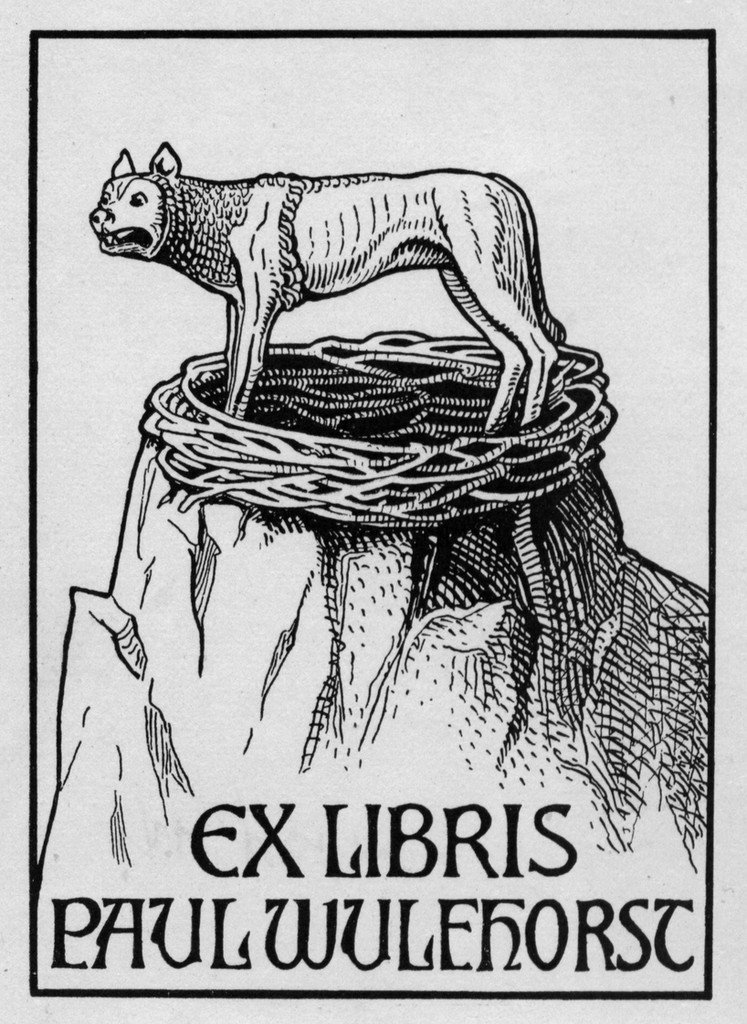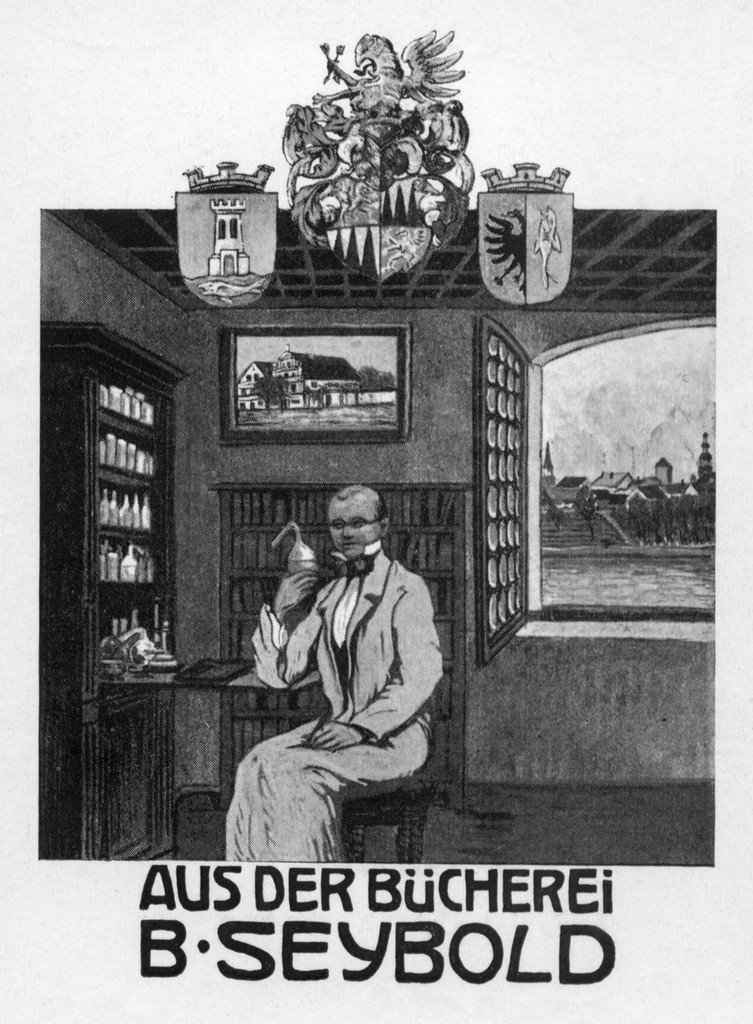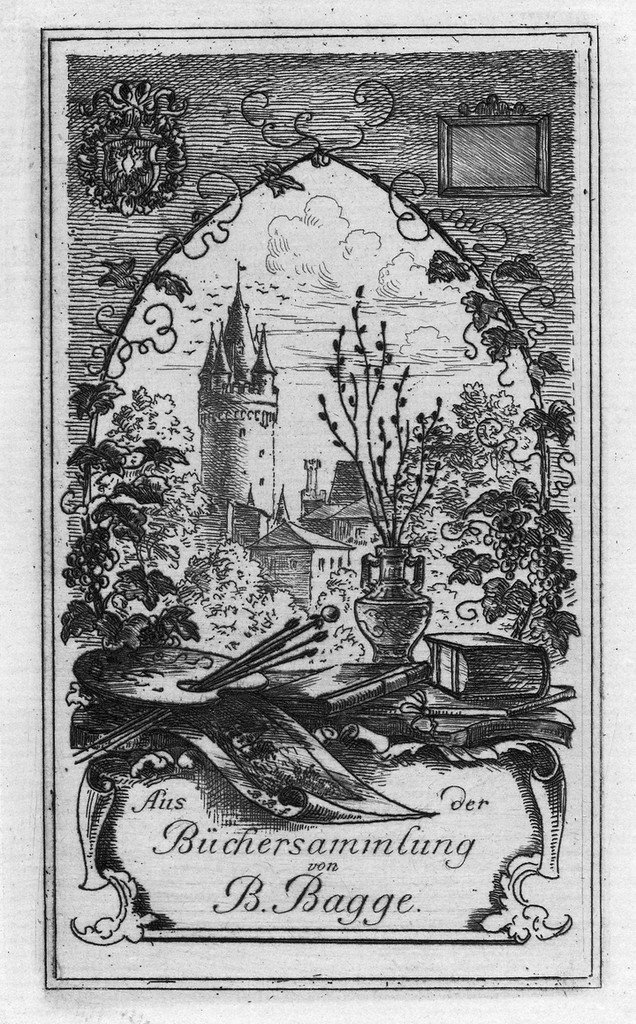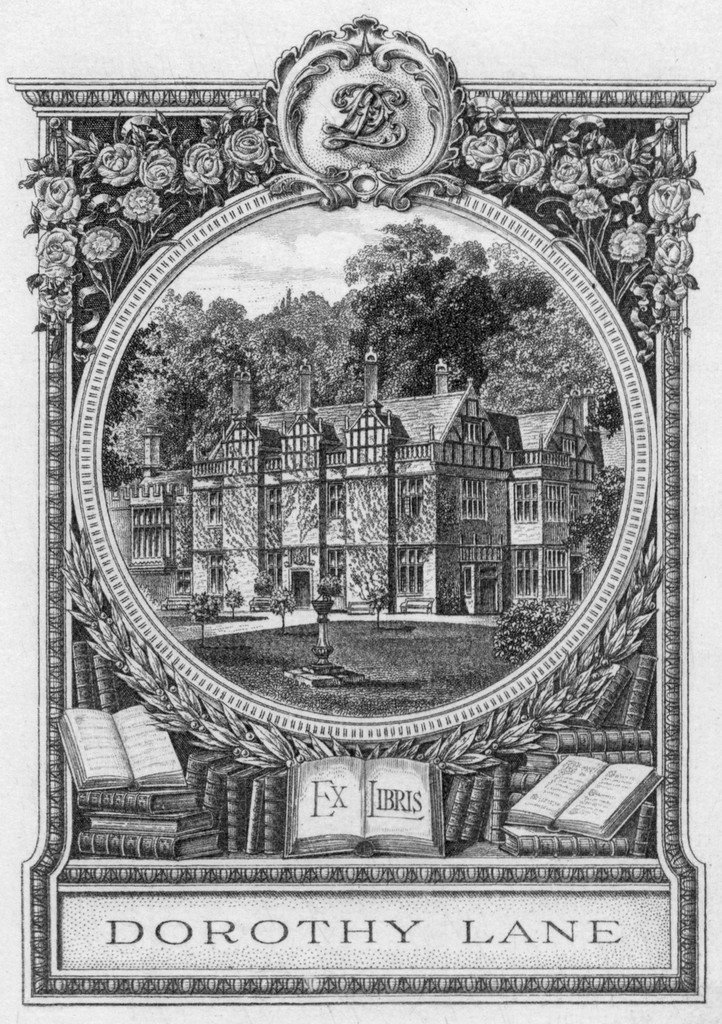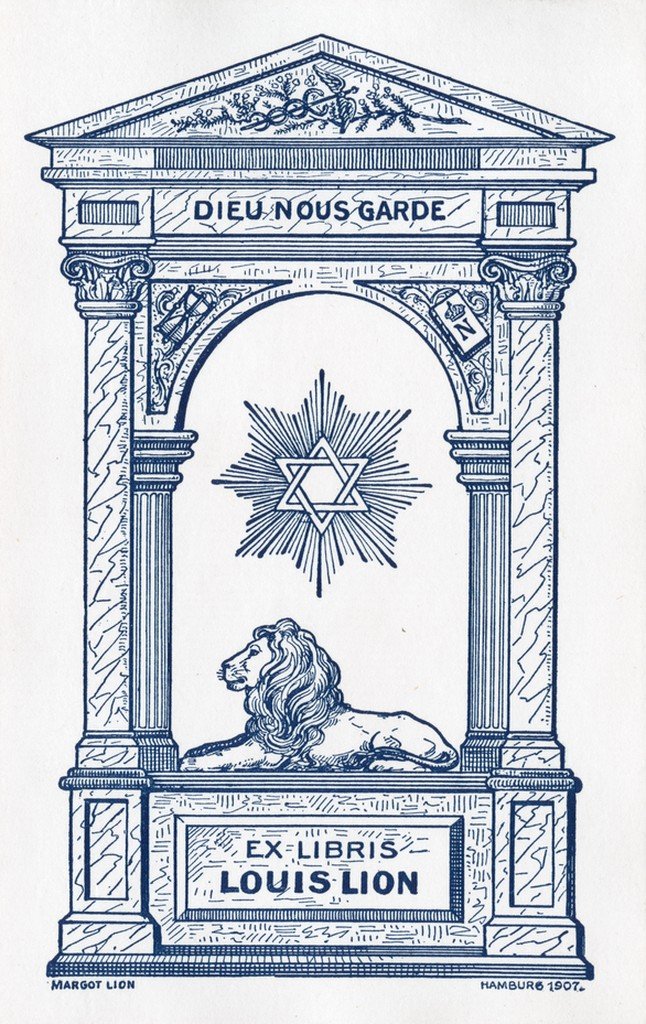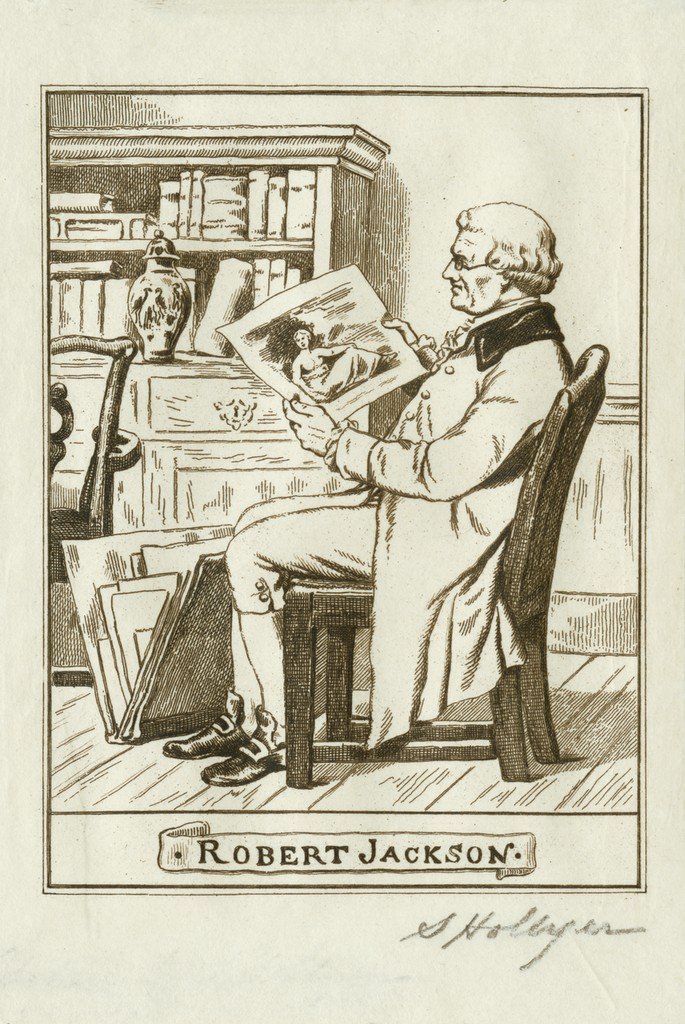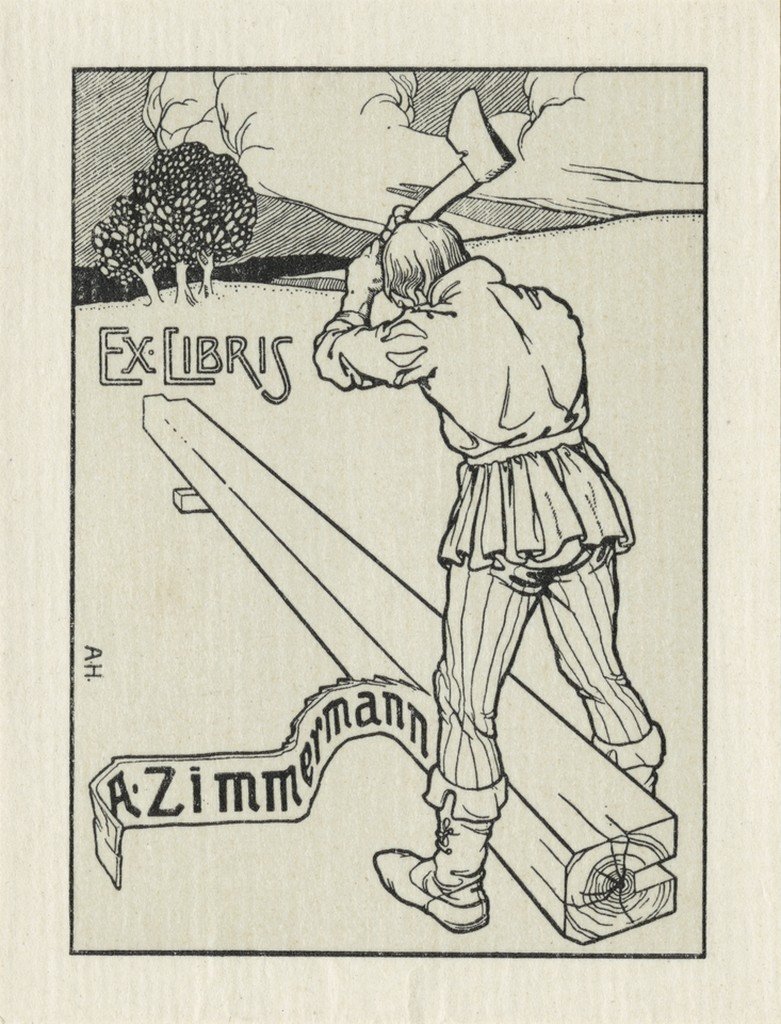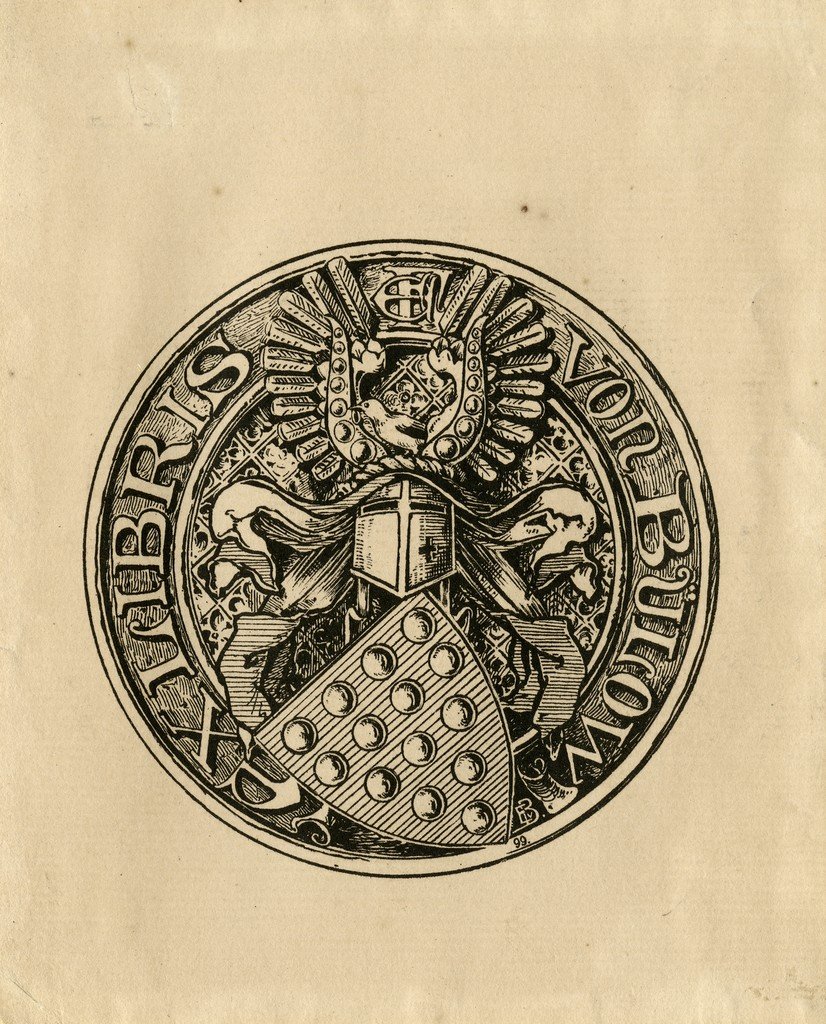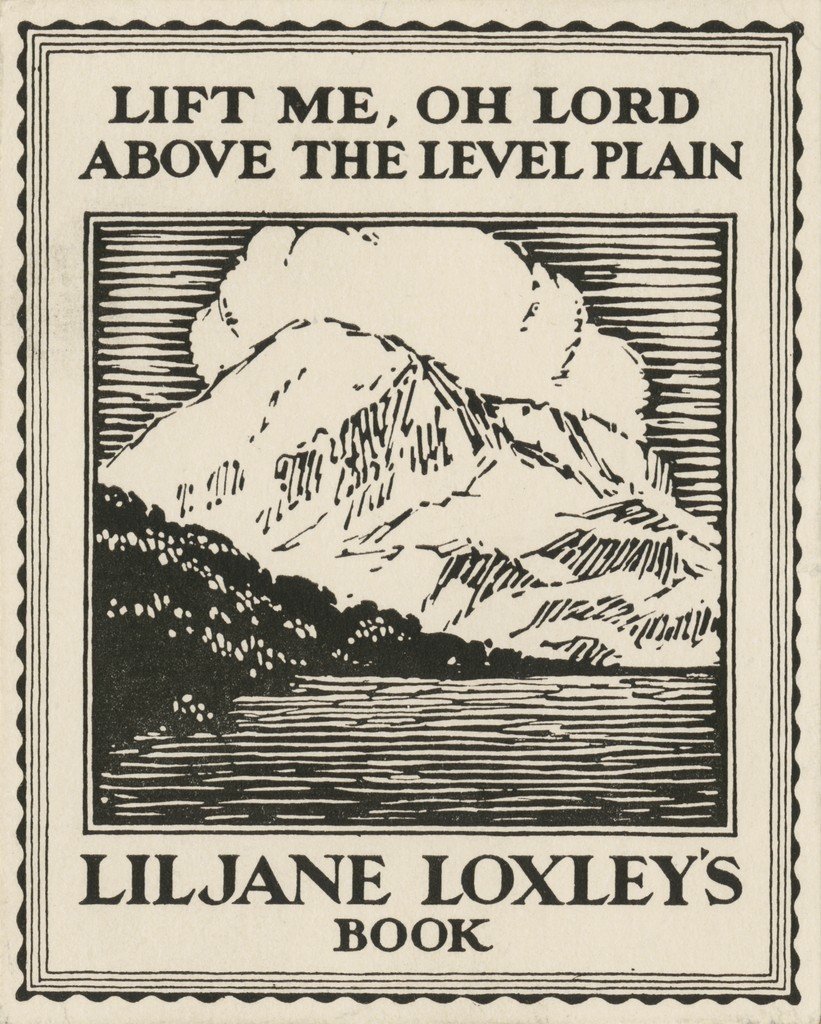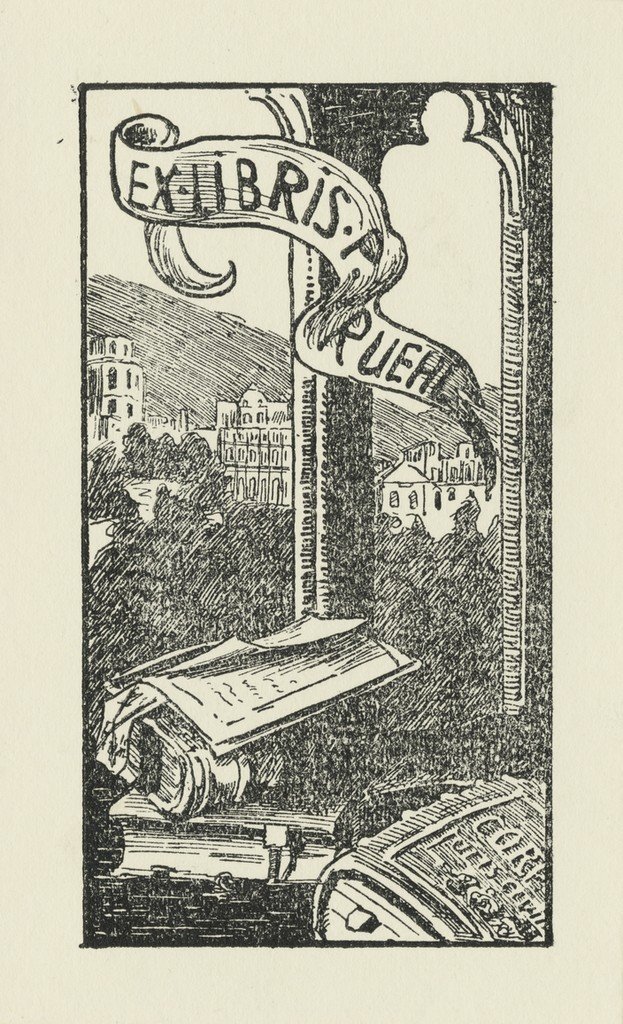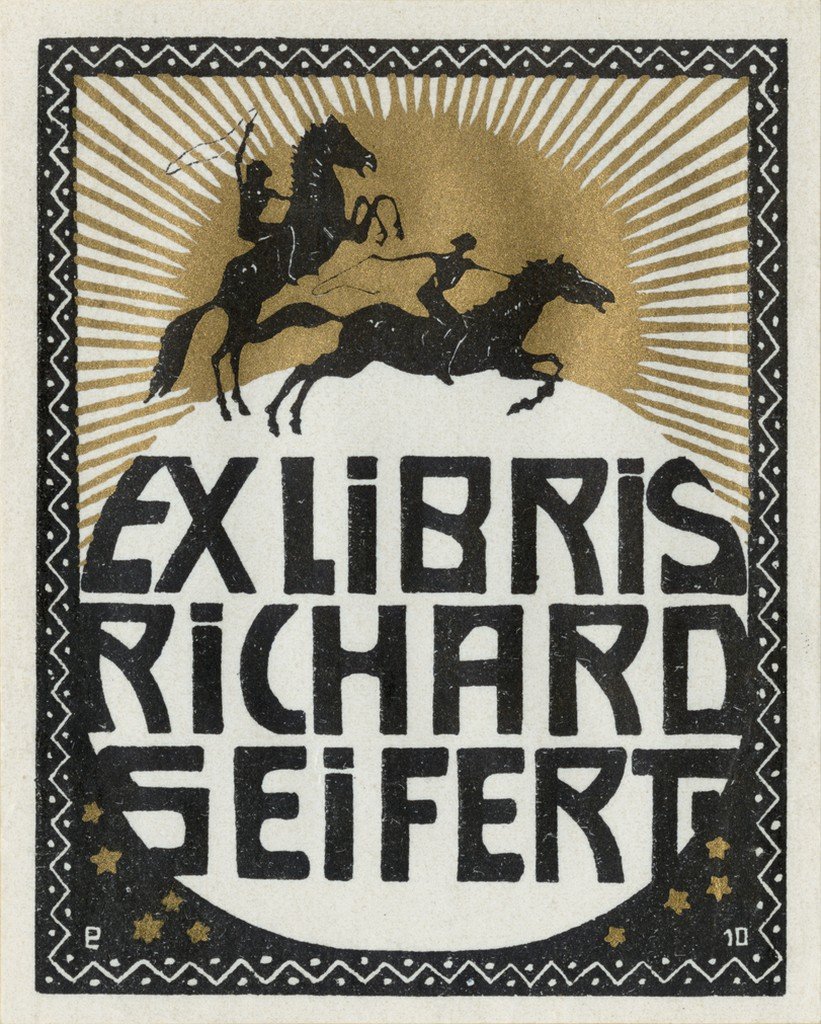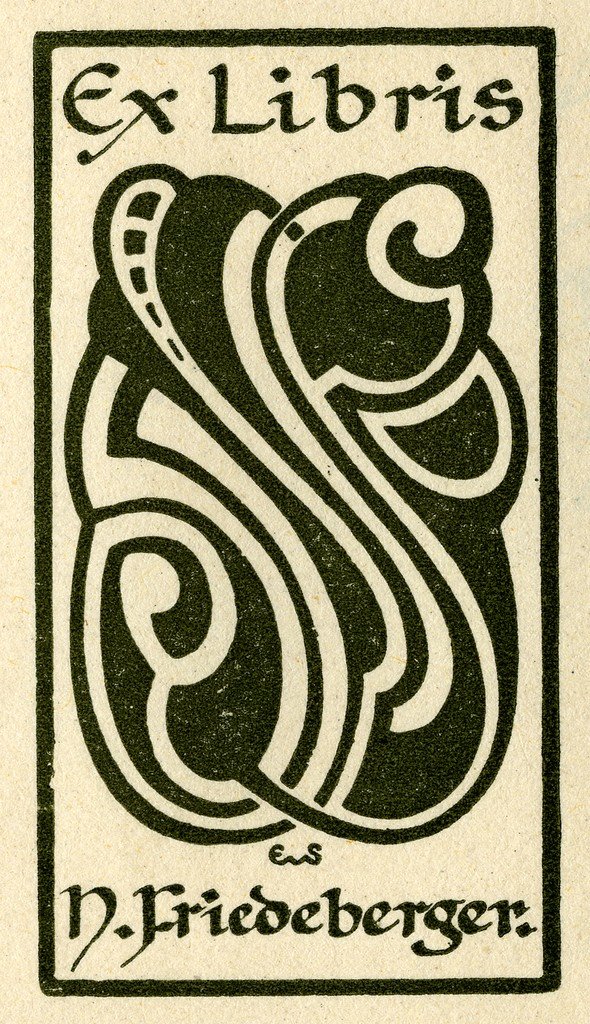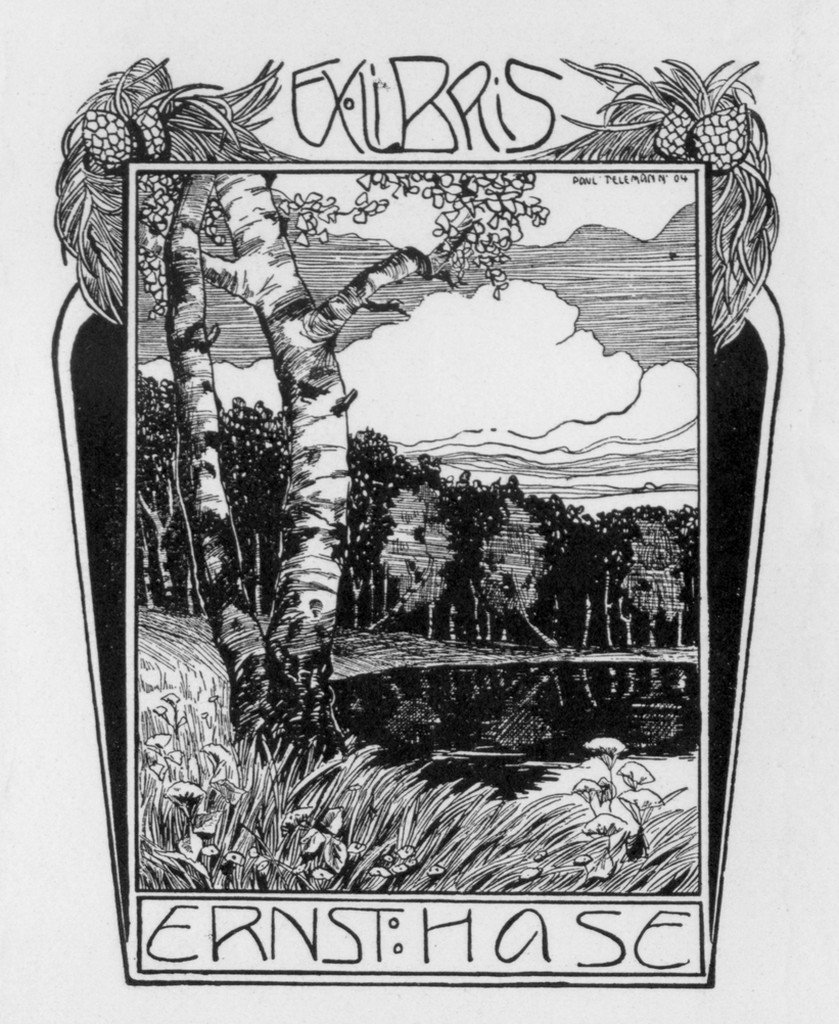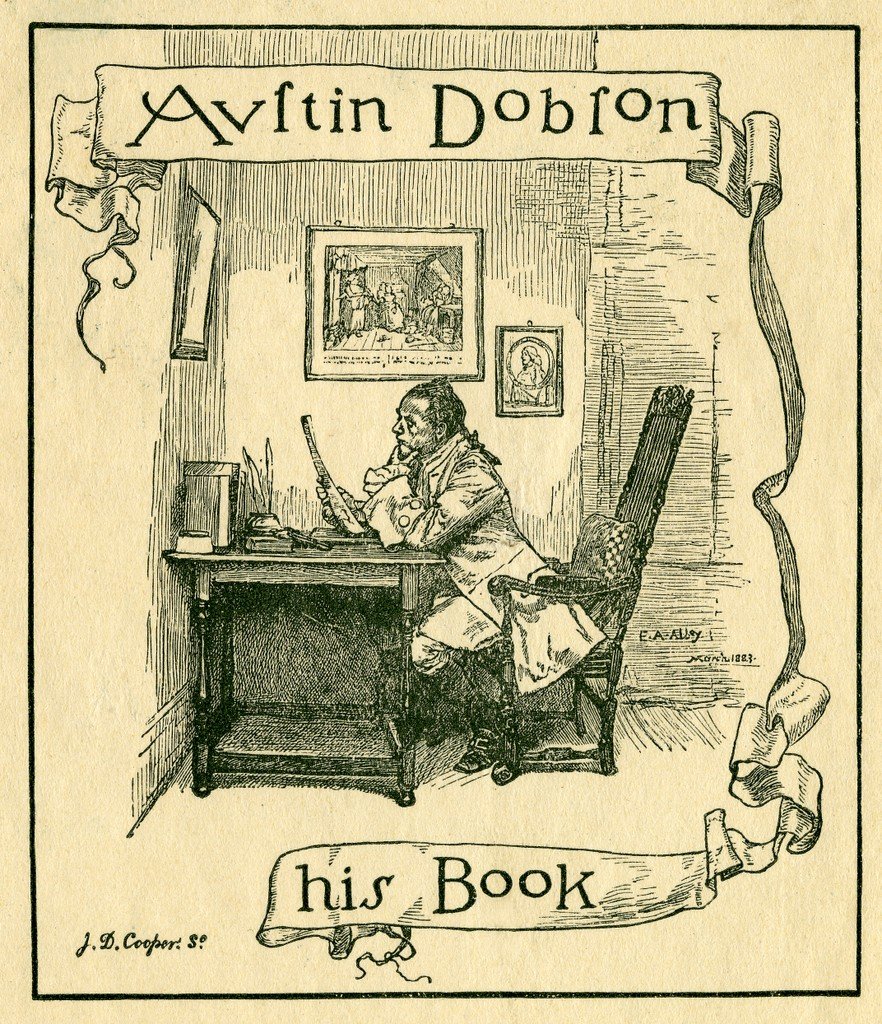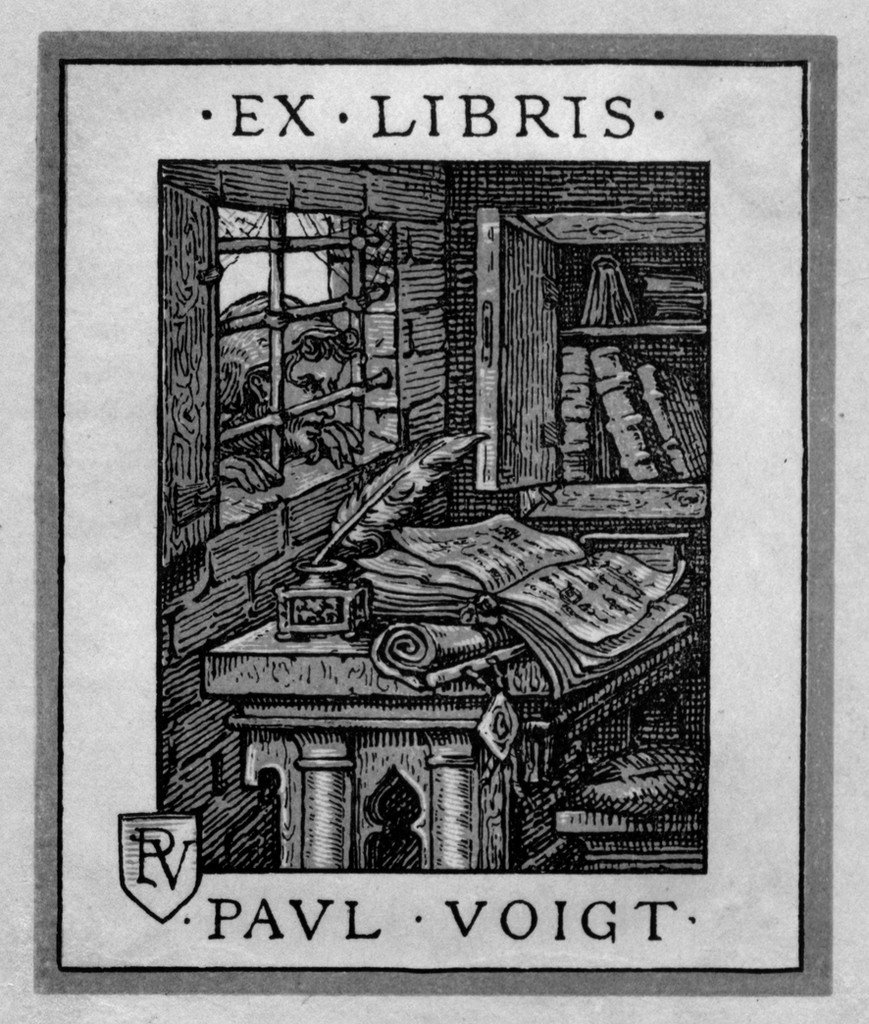Ex Libris Bookplate Designs
Prior to the 20th century, ex libris bookplates were popular for marking personal book ownership. Bookplates started as simple inscriptions in the Middle Ages. The earliest known examples of printed bookplates are German, and date from the 15th century. From the Jacobean period (1567-1625) to the Edwardian era these printed bookplates evolved into elegant engravings and etchings known as ex-libris ('from the books of...'). The ex-libris often incorporate a name, motto and coat-of-arms which relate to the book's owner. Famous artists such as William Hogarth and members of the Bloomsbury group all designed bookplates for themselves and others.
In the Middle Ages and the early modern period when books were rare and precious, book owners would want to take particular care that if their books were lent or stolen there was a good chance of them being returned. As printing methods developed and books became cheaper to produce (and to own) bookplates fell out of fashion. Because bookplates were so common in the past, they are important evidence in tracing the provenance of rare and antiquarian books.
Bookplate collecting began in the 19th century and most collections were built through the exchange of duplicate pieces. Often collectors would have several personal designs just for the purpose of trading with others.
Below are some of my favorite bookplates found through collections online.
Personal Bookplates of Famous Writers
Pratt Institute Ex Libris Collection
The Ex Libris Collection consists of nineteenth- and twentieth-century bookplates from private and institutional libraries. Little is known about the history of the collection, but according to an entry in the Report of the Pratt Institute Free Library from June 30, 1918, the decision to being collecting and exchanging bookplates began in 1918 and likely continued through the 1930s, though there is no record of when the library ceased building the collection. The plates feature finely detailed engraving and etching, and serve as outstanding examples of period book art and typography. Represented in the collection are prominent American bookplate artists such as William Fowler Hopson and Joseph Winfred Spenceley, as well as important Dutch, English, German, Hungarian, Swedish, and Spanish artists.
The physical collection is currently housed in the library's Special Collections.
The bookplate designs shown below do not represent all in the Pratt Institute collection, just the ones that caught my eye.




